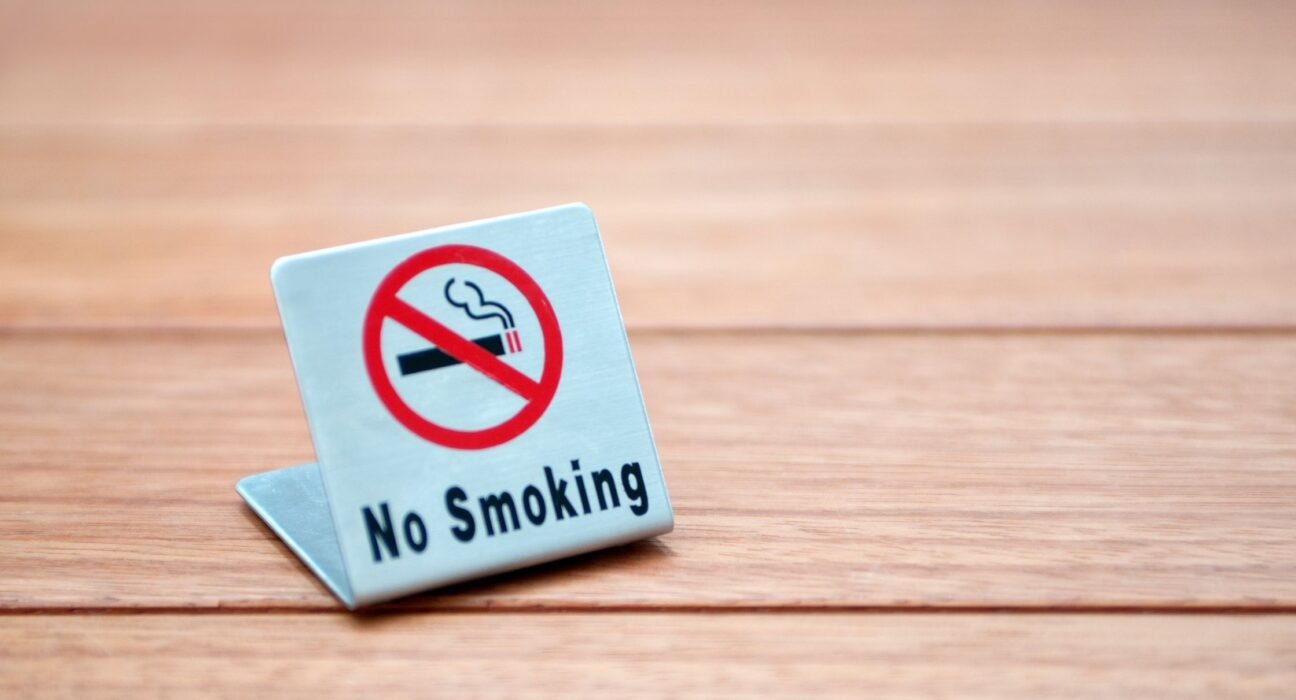Passive Smoking: Effects, Risks, Diseases, Quitting & Solutions

Smoking passively is a subtle but significant risk to health worldwide. In contrast to passive smoking which involves smoking cigarettes, passive smoking – also called secondhand smoke or smoking in the environment – occurs when people who are not smokers are unable to avoid breathing in smoke from other smokers. The smoke is a mixture of more than 7,700 harmful chemicals, many of which are poisonous and about 70 of them could cause cancer. The most damaging part is that smoking in passive mode doesn’t only harm the person who smokes it puts everyone around at risk which includes seniors, children and even babies who are not yet born.
In recent years, the public consciousness of smoking passively has risen but millions of people remain exposed to it every day at work, homes as well as public transport and in social settings. The negative health effects are serious and diverse, ranging from asthma and respiratory illnesses to lung cancer and heart disease. Health agencies and governments across all over the world have taken measures to limit exposure by implementing laws and health awareness campaigns, however individual efforts are equally vital.
On this site, we’ll examine the negative effects of smoking cigarettes in passive mode, determine the health risks associated with it and discuss the diseases it could cause, and offer useful solutions for individuals to safeguard themselves and others from its negative effects.
What is Passive Smoking?
Passive smoking is the involuntary breathing of smoke produced by tobacco products that burn like cigarettes, cigars and pipes, and the smoke exhaled from a smoker. It’s a major public health risk since it exposes non-smokers the same dangers of substances that are found in smoking active cigarettes.
There are two elements in passive smoke.
-
Mainstream Smoke Exhaled from the smoking.
-
Smoke from the sidestream that is smoke that is released from the burning at the end of an cigarette cigar.
Smoke from sidestreams is more hazardous due to the higher concentrations of cancer-causing substances and is released into the atmosphere unfiltered. This is why it is particularly dangerous when it is enclosed, such as in car and home in areas with limited ventilation.
Common Sources of Passive Smoking:
- Houses where several people smoke inside.
- Cars where smoking is commonplace is a common occurrence, particularly when children are present.
- Public spaces like parks, restaurants and shopping centers (especially in countries that have smoking restrictions that aren’t as strict).
- Smoking in workplaces that have inadequate policy.
Effects of Passive Smoking on Health
Smoking cigarettes can cause immediate and long-term health impacts. The severity of these adverse impacts is dependent on the length as well as frequency, environmental ventilation and the age of the person and overall health.
1. Short-Term Effects:
- The eyes are irritated the nose, eyes, and throat
- Shortness of breath
- Dizziness and headaches
- The severity of asthma symptoms increases
- Allergy reaction
These symptoms may appear to be at first, but they can turn into chronic issues with continued exposure.
2. Long-Term Effects:
-
A decline in lung function Infrequent exposures could result in a decrease in lung capacity as well as chronic bronchitis.
-
Heart-related issues Smoking in the past damages blood vessels, and increases the possibility of blood clots developing that can cause heart disease.
-
Higher risk of developing cancer Smoking secondhand cigarettes has been classified as a group Carcinogen by the EPA. Long-term exposure increases the risk of developing lung or throat cancer, as well as nasal cancers.
-
Reproductive and pregnancy-related complications Passive smoking has been connected to stillbirths, miscarriages and low birth weight or sudden infant deaths syndrome (SIDS).
Passive Smoking Health Risks in Vulnerable Groups
Certain individuals are more vulnerable to the risks from passive smoking due to being older, having underlying illnesses or being near smokers.
1. Infants and Children
- Increased chance of developing sudden infant mortality syndrome (SIDS)
- Delays in development and behavioral issues
- An increased risk of suffering from asthma as well as bronchitis and pneumonia
- Aural infections and hearing issues
2. Pregnant Women
- The exposure increases the chance of an accident.
- This can lead to problems such as low birth weight, or premature delivery.
- Higher risk of birth abnormalities and learning problems for children.
3. Elderly Adults
- Amplification of existing conditions such as COPD or coronary heart disease
- Immune response is weak
- Instability to heal and increased risk of infection
Diseases Caused by Passive Smoking
Smoking cigarettes is not only an inconvenience, it is an essential factor in the development of numerous serious diseases. Research has proven that people who do not smoke who are exposed to smoke from secondhand sources are at risk of similar health risks that active smokers do.
1. Cardiovascular Diseases
- Risk of strokes and heart attacks
- The lining of blood vessels
- High blood pressure and cholesterol levels
2. Lung Diseases
- Chronic obstructive pulmonary disorder (COPD)
- Asthma and chronic asthma and chronic bronchitis
- Lung infections, particularly in children
3. Cancer
- Lung cancer
- Nasal sinus cancer
- Breast cancer (under research on cases of passive exposure to smoking)
- Larynx and throat cancer
4. Mental Health Impact
- Elevated stress levels due to frequent exposure
- Children’s behavior issues
- Anxiety and sleep disturbances
Workplace Exposure and Its Consequences
In many countries, smoking in indoor areas is not permitted in public areas However, smoking can be found at private offices, specific restaurants, or other areas.
The risks include:
- Reduced productivity because of regular health issues
- Absenteeism is higher due to illnesses
- Legal issues that could be a concern for employers
- Increased insurance costs and liabilities
Preventive Strategies in Workplaces:
- Enforce strict no-smoking policies
- Provide designated outdoor smoking zones
- Offer programs to stop smoking for employees
- Instruct staff members about the risks of smoking passively
Passive Smoking in Public Spaces
The public is exposed in the streets, parks transport hubs, parks, and at festivals. While smoking bans have helped but enforcement is still uncoordinated in certain areas.
Tips to Avoid Exposure in Public:
- Select smoke-free restaurants and hotels
- Avoid gatherings and crowds where smoking is a common practice.
- Respectfully ask others to not smoke around you.
- Masks are required in smoky or dense areas.
Quitting Smoking to Protect Others
In the event that you’re an active smoker quitting will not only improve your health, but also protects your loved ones, family members, and the community from smoking passively. Smoking near windows or in a different space doesn’t reduce the risk, as it is a part of furniture and carpets as well as clothes.
Benefits of Quitting for Others:
- Healthier children with fewer respiratory issues
- Reduced risk of illness for elderly family members
- Improved air quality at home
- Less tension and anxiety in shared spaces
Support for Those Affected by Passive Smoking
If you suffer from a condition caused by smoking passively the early detection and regular medical care are vital.
Health Support Options:
- Rehabilitation of the lung for chronic problems
- Therapy and counseling to treat mental health issues
- Inhalers and medications to treat respiratory discomfort
- Regular checks to check for the effects of exposure.
Raising Awareness and Educating Communities
Education is a key factor in reducing the amount of passive smoking around the world. Most people aren’t aware of how harmful smoking secondhand cigarettes can be, particularly for pregnant women.
Steps to Raise Awareness:
- Schools can incorporate anti-smoking instruction into the curriculum.
- Doctors should educate patients about the dangers of smoking cigarettes
- Campaigns for media can draw attention to the real-life experiences and their results
- Public figures and social influencers can be advocates for smoke-free living.
Conclusion
Smoking cigarettes is a significant and preventable health risk for the public at large. Its effects extend beyond the smoker, silently harming innocent bystanders–especially children, elderly individuals, and those with compromised health. From heart and cancer to psychological stress and developmental issues the negative effects of secondhand smoking are indisputable.
Knowing what passive smoking is and the health risks associated with it and taking preventive measures can drastically lessen the burden it puts on society and individuals. If you’re a smoker, a non-smoker parent, or policymaker, you play an important role in establishing the foundation for a smoke-free atmosphere.
Make educated choices. Adopt smoke-free laws. Be sure to protect your family members and your community by refusing to smoking passively.








